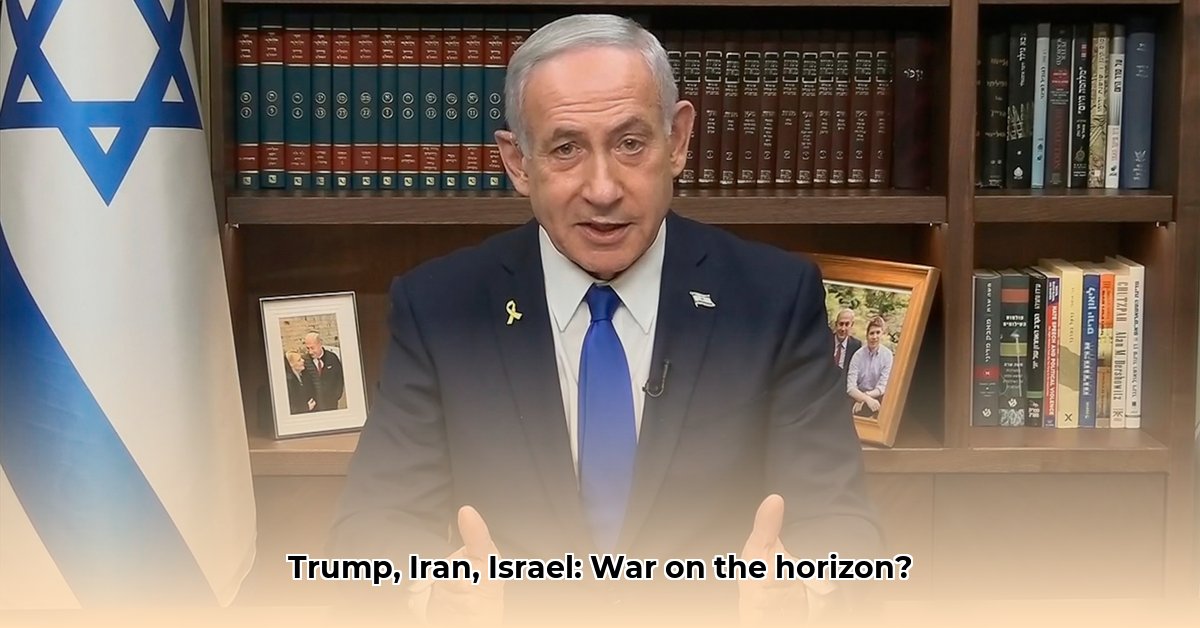
The Escalating Israel-Iran Conflict: A Looming Threat of Wider War
The situation between Israel and Iran is rapidly deteriorating, raising serious concerns about a potential regional conflict. Recent events, particularly the October 2023 Hamas attack on Israel and subsequent Israeli retaliatory strikes against Iranian nuclear sites and military personnel, have significantly elevated tensions. The risk of wider war is palpable, exacerbated by the impending decision of former US President Trump regarding potential US military involvement. Diplomatic efforts are underway, but their success remains uncertain amidst this volatile climate.
A Complex Web of Causes and Consequences
The current crisis is the culmination of long-standing tensions between Israel and Iran, rooted in differing geopolitical ambitions and ideological divides. Iran's pursuit of nuclear capabilities is a central concern for Israel, leading to preemptive strikes on Iranian nuclear facilities. These actions, however, are met with forceful counter-responses from Iran, creating a vicious cycle of escalation. The October 2023 Hamas attack in Gaza added an additional layer of complexity, further intensifying regional instability and potentially influencing the trajectory of the conflict. Will this cycle of violence continue, spiralling into a broader conflict?
The Role of External Actors: A Delicate Balancing Act
The involvement of external actors, particularly the United States, significantly impacts the dynamics of the conflict. Former President Trump’s looming decision about US military intervention serves as a pivotal factor in determining the future course of events. His choice could tip the scales towards a wider conflict or potentially help stabilise the situation. Simultaneously, the international community, including the United Nations and various regional powers, will have to engage in diligent diplomacy to de-escalate tensions and prevent a catastrophic outcome. Can diplomatic efforts alone prevent an eruption of widespread conflict?
Assessing the Risks: A Path Towards De-escalation
The likelihood of a full-blown regional conflict is significant. The potential consequences—civilian casualties, regional instability, and global economic repercussions—demand immediate and decisive action to mitigate escalating tensions. What steps are needed to prevent a wider regional conflict?
Key Risk Factors and Mitigation Strategies:
Escalation of Military Actions: The probability is high, with a catastrophic impact. Mitigation requires immediate ceasefire negotiations, facilitated by international actors.
Regional Spillover: This risk is very high, encompassing long-term destabilization. A collective regional security framework, supported by international guarantees, is crucial.
Iranian Nuclear Programme Advancement: The likelihood is high, potentially leading to high impact. Stricter international sanctions and robust diplomatic pressure are needed.
Humanitarian Crisis: A high likelihood, with very high impact. International humanitarian aid and the creation of safe zones for civilians are essential.
US Military Intervention: The possibility exists, carrying extremely high impact. The need for a balanced approach involving diplomacy and clear communication between all parties is paramount.
Pivotal Points: Navigating the Path to Peace
Immediate De-escalation: A ceasefire is paramount to prevent further loss of life and regional instability.
Diplomatic Engagement: Mediation efforts must be intensified by international actors, aiming at direct or indirect dialogue between Israel and Iran.
Long-Term Solutions: Addressing the underlying causes of the conflict, including Iran's nuclear ambitions, through a combination of diplomacy, sanctions and long-term security guarantees, is necessary for lasting peace.
This conflict demands a multifaceted approach involving immediate de-escalation efforts and long-term solutions to achieve peace, including the need for a broader regional security framework to avoid further escalation and manage the potential impacts. The time for decisive action is now.
(Note: This analysis is based on publicly available information and does not represent official government policy or expert opinion.)